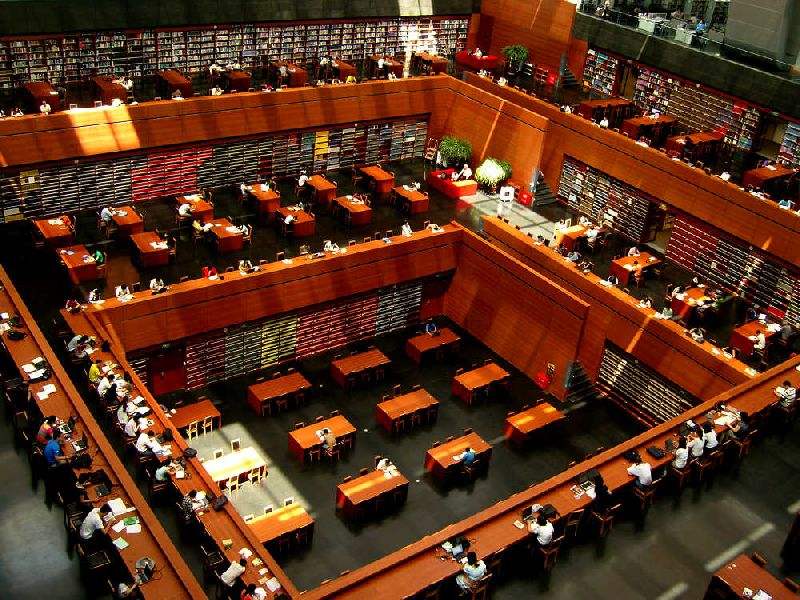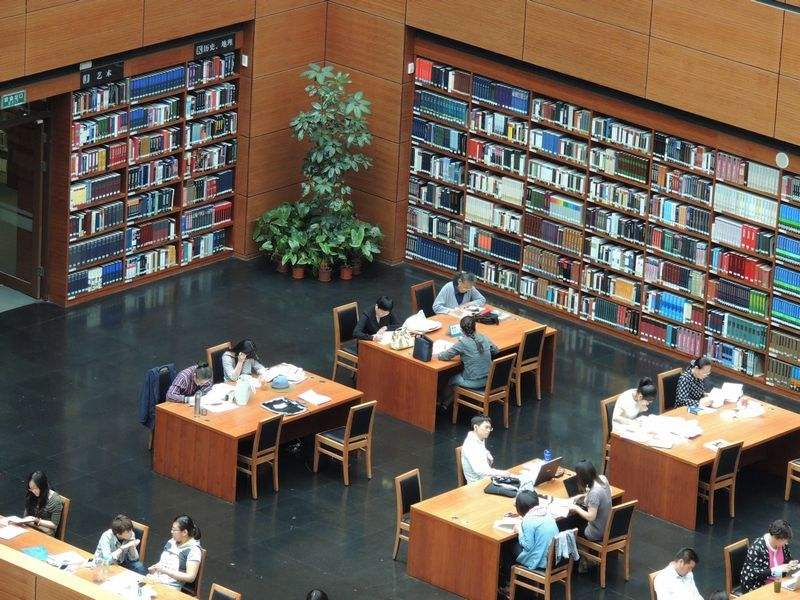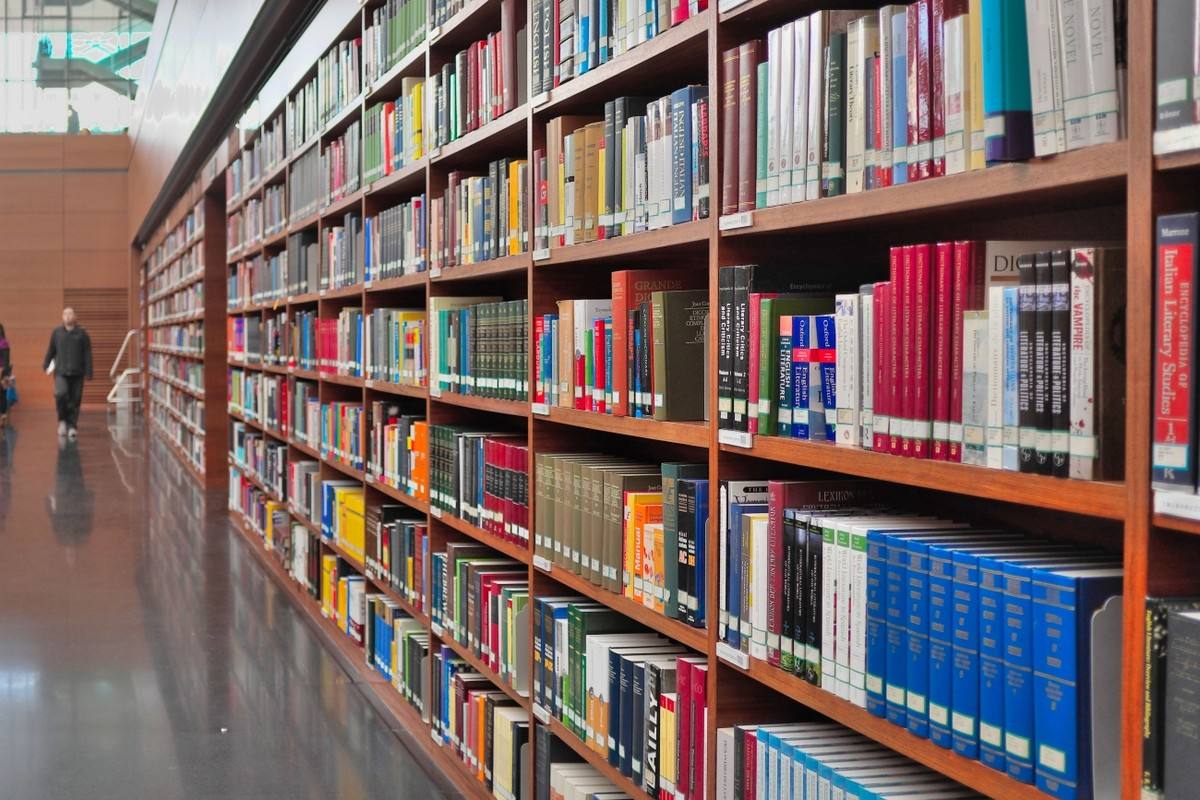24 Hours Hotline: +86 137-3541-1378
Email:[email protected]
24 Hours Hotline: +86 137-3541-1378
Email:[email protected]

Introduction
The National Library of China or NLC in Beijing is the national library of the People's Republic of China. With a collection of over 35 million items, it is the largest library in Asia and one of the largest in the world. It holds the largest collections of Chinese literature and historical documents in the world.
The forerunner of the National Library of China, the Imperial Library of Peking (?????; Jingshi Túshuguan), was founded on 9 September 1909 by the government of the Qing dynasty. It was first formally opened after the Xinhai Revolution, in 1912. In 1916, the library received depository library status. In July 1928, its name was changed to National Peiping Library and was later changed to the National Library.
History & Background
The earliest Chinese references to Western-style public libraries were by Lin Zexu in the Sizhou Zhi (???; 1839) and Wei Yuan in the Illustrated Treatise on the Maritime Kingdoms (first ed., 1843), both of which were translations from Western books.
In the late nineteenth century, in response to several military defeats against western powers, the government of the Qing dynasty (1644–1912) sent several missions abroad to study western culture and institutions. Several members of the first Chinese diplomatic mission, which traveled to the United States, England, France, and other countries from 1868 to 1870, recorded their views of western libraries, noting that they attracted a large number of readers. Journalist Liang Qichao (1873–1929), who became a prominent exiled intellectual after the failure of the Hundred Days' Reform in 1898, wrote about the Boston Public Library and the University of Chicago Library, praising their openness to the public and the virtue of readers who did not steal the books that had been lent to them. Dai Hongci (???), a member of another Qing mission sent abroad to study modern constitutions, noted the efficacy of book borrowing at the Library of Congress.
Foundation
In 1906, the governor of Hunan province Pang Hongshu memorialized to the throne to announce he had completed preparations for the creation of a provincial library in Changsha. In 1908 and 1909, high officials from the provinces of Fengtian, Shandong, Shanxi, Zhejiang and Yunnan petitioned the court asking for permission to establish public libraries in their respective jurisdictions. In response, on 2 May 1909, the Qing Ministry of Education (Xuebu ??) announced plans to open libraries in every province of the empire.
On 9 September 1909 Zhang Zhidong, a long-time leader of the Self-Strengthening movement who had been viceroy of Huguang and was now serving on the powerful Grand Council, memorialized to request the foundation of a library in China's capital. Foundation of the library was approved by imperial edict that same day. The institution was originally called the Imperial Library of Peking or Metropolitan Library . Lu Xun and other famous scholars have made great efforts for its construction. Although the Qing government and Beiyang government after the revolution of 1911, the Treasury is empty, unable to maintain the library funds, but also the rich collection of ancient books library, because the country has accepted the deposit of Museum status, it was a great progress in the development of Library Chinese.
Philologist and bibliographer Miao Quansun (???; 1844–1919), who had overseen the founding of Jiangnan Library in Nanjing two years earlier, was called in to administer the new establishment. As in Jiangnan, his assistant Chen Qingnian took charge of most of the management.
A private proposal made by Luo Zhenyu in the early 1900s stated that the library should be located in a place protected from both fire and floods, and at some distance from noisy markets. Following these recommendations, the Ministry of Education first chose the Deshengmen neighborhood inside the northern city wall, a quiet area with lakes. But this plan would have required purchasing several buildings. For lack of funds, Guanghua Temple (???) was chosen as the library's first site. Guanghua Temple was a complex of Buddhist halls and shrines located near the northern bank of the Shichahai, but inconveniently located for readers, and too damp for long-term book storage. The Imperial Library of Peking would remain there until 1917. In 1916, the Ministry of education ordered the library, every published book should be registered in ministry of interior and all collected by library, The function of national library begins to manifest.
Later history
The National Peking Library opened to the public on 27 August 1912, a few months after the abdication of Puyi (r. 1908–12), the last emperor of the Qing dynasty. From then on, it was managed by the Ministry of Education of the Republic of China (1912–49). The day before the library's opening, its new chief librarian Jiang Han (??: 1853–1935) argued that the National Peking Library was a research library and recommended the opening of a new library with magazines and new publications that could attract a more popular readership. In June 1913, such a Branch Library was opened outside Xuanwumen Gate, and more than 2,000 books were transferred there from the main library. On 29 October 1913, because Guanghua Temple proved too small and inaccessible, the main library itself was closed, pending the choice of a new site.
The Library charged one copper coin as a reading fee, whereas the Tianjin Library charged twice as much and the Shandong public library charged three coins. At first, readers could not borrow books, but sometime before 1918 borrowing became allowed.
In 1916, the Ministry of Education (MOE) of the Republic of China ordered that a copy of every Chinese publication should be deposited at the Metropolitan Library after being registered with the Copyright Bureau.
After the Northern Expedition of Kuomintang in 1928, the National Peking Library changed its name to the National Peiping Library and served as the national library with the National Central Library in capital Nanking together. In 1931, the new library house in Wenjin Street near the Beihai Park opened. After the People's Republic of China was officially established in October 1949 and Peking became its capital, the National Peiping Library was renamed National Peking Library. In 1951, the Ministry of Culture declared that its official English name would now be Peking Library.
In 1978, two years after the end of the Cultural Revolution, the library started publishing the Bulletin of the Beijing Library (Beitu Tongxun ????), which quickly became one of China's most important library publications. In 1979, under an Implementing Accord regulating cultural exchanges between the U.S. and China, it vowed to exchange library material with the Library of Congress. To compensate for a lack of professionally trained librarians, starting in 1982 librarians from the NLC and other academic libraries spent periods of six months at the Library of Congress and the Yale University Library. To develop library science, the NLC established links with the Australian National University.
In October 1987, the Library moved to a modern building located north of Purple Bamboo Park in Haidian District. In 1999, it was officially renamed the National Library of China.
November 2001, approved by the State Council, the National Library of the two phase of the project and the national digital library project formally approved. As an important part of the national information industry infrastructure, has been included in the national "fifteen" plan, the national total investment of $1 billion 235 million, began to put into effect.
In October 28, 2003, the National Library ALEPH500 computer integrated management system has been put into operation, which laid the foundation for the National Library to enter the ranks of the world's advanced libraries.


Collection
The National Library of China's collection is the largest in Asia. Its holdings of more than 36.45 million items (as of December 2016) also make it one of the world's largest libraries. It houses official publications of the United Nations and foreign governments and a collection of literature and materials in over 115 languages. The library contains inscribed tortoise shells and bones, ancient manuscripts, and block-printed volumes. Among the most prized collections of the National Library of China are rare and precious documents and records from past dynasties in Chinese history.
Notable collections and items
1. a collection of over 270,000 ancient and rare Chinese books, and over 1,640,000 traditional thread-bound Chinese books
2. over 35,000 inscriptions on oracle bones and tortoise shells from the Shang dynasty (c. 16th–11th century BC)
3. surviving tablets of the Xiping Stone Classics created by Cai Yong (132–192) of the Eastern Han dynasty (25–220 AD)
4. more than 16,000 volumes of precious historical Chinese documents and manuscripts from the Mogao Caves in Dunhuang
5. old maps, diagrams, and rubbings from ancient inscriptions on various materials
6. copies of Buddhist sutras dating to the 6th century
7. original draft of Sima Guang's Zizhi Tongjian
8. books and archives from imperial libraries of the Southern Song dynasty (1127–1279), including the works of Zhu Xi
9. oldest extant printed edition of the Huangdi Neijing (ca. 100 BC), from the Jin dynasty (1115–1234)
10. the most complete surviving Ming dynasty (1368–1644) copies of the Yongle Encyclopedia ("Great Canon of the Yongle Era")
11. a copy of the Siku Quanshu ("Complete Library of the Four Branches of Literature"), completed in 1782 under the Qing dynasty
12. essential literary and books collection from the Qing imperial colleges and renowned private collectors
Prev: Bailin Temple
Duration:7 - 8 hours
Attractions(Cities):Tiananmen Square, Forbidden City, Temple of Heaven, Summer Palace
Tour Style:Immerse yourself in the Historic city of Beijing during a full-day tour of the city’s most significant historical sites: Forbidden City, Temple of Heaven, Tian’anmen Square and the Summer Palace. The four sightseeing spots provide great insight into the palace life and the imperial court ceremonials of more than 600 years ago. Convenient round-trip transportation from your Beijing hotel/Airport/Train station is included. It is an ideal trip during your stort stay in Beijing!
Duration:5 Days, 4 Night
Attractions(Cities):Mutianyu great wall, Sanlitun, Morning market, Forbidden City, Tiananmen Square, Jingshan Park, Temple of Heaven, Nanluoguxiang Hutong
Tour Style:The overall style of the itinerary embodies an immersive journey through Beijing's imperial history and rich cultural tapestry. Each day offers a blend of iconic sightseeing experiences, such as exploring historic landmarks like the Great Wall and the Forbidden City, with opportunities for cultural immersion, including traditional activities like kite flying, Tai Chi, and hutong exploration. The itinerary strikes a balance between historical exploration and authentic cultural encounters, providing travelers with a comprehensive and enriching experience of Beijing's vibrant heritage.
Duration:5 Days, 4 Nights
Attractions(Cities):Tiananmen Square, Forbidden City, Temple of Heaven, Mutianyu Great Wall , Summer Palace, Beijing Universal Studios, Gubei Water Town, Simatai Great Wall
Tour Style:Perfect for first-time visitors, this in-depth, multi-day tour hits all the highlights of Beijing, from the Forbidden City to the Great Wall of China. With a private guide to take care of the details, you can focus on exploring Beijing history, culture, wildlife, and cuisine, hassle-free. Flexible tour with a choice to enjoy the evening show: Kungfu or acrobatic, eat an authentic Chinese delicacy – Peking duck or old Beijing Hot Pot to enhance the tour experience.
Duration:2 Days, 1 Night
Attractions(Cities):Temple of Heaven, Forbidden City, Tian'anmen Square, Mutianyu Great Wall, Summer Palace, Nanluoguxiang Hutong, Optional activities: Legend of Kung Fu Show; Peking duck Dinner
Tour Style:Join an expert guide for a private tour of Beijing’s most fascinating destinations and UNESCO Sites, from the Forbidden City to the Mutianyu section of the Great Wall of China. Take the stress out of planning transport by having hotel/Airport/Train station pickup and drop-off included. Flexible tour with a choice to enjoy an evening show or eat an authentic Chinese delicacy – Peking duck to enhance the tour experience.
Duration:7 Days, 6 Nights
Attractions(Cities):Beijing, Xian
Tour Style:Spend a week in China to explore the ancient capital Beijing & Xian by high speed train, one of the best Beijing Xian tours as well as popular china high speed train tour. Both are the must-visit city in China with lots of historical, cultural relics; It is a fine-designed tour for time-limited tourists who are interested in culture and history. Meets different people's needs with the flexible and comfortable pace. Experience the most comfortable high speed train ride from Beijing to Xian. An all-inclusive pacakge covers the transfer, guide,meals,hotels,train tickets and the entrance for the sightseeing sites in Beijing and Xian!
Wechat: Chinaprivatetour
24 Hours Hotline:
+86 137-3541-1378
(Your Privacy is Protected)
1 to 1 tailor-made service from our professional travel advisors for the most sophisticated
Constantly excellent reviews for attraction, hotel and service Competitive price
Local experts provide quality tours Best selected knowledgeable local guides Authentic local restaurants
7*24 hours available to create you a worry-free tour. No Hidden Fees and absolutely no pressure to buy. Secured









Copyright © 2017 Chinabeijingprivatetour.com All rights reserved. 浙ICP备18056007号-2